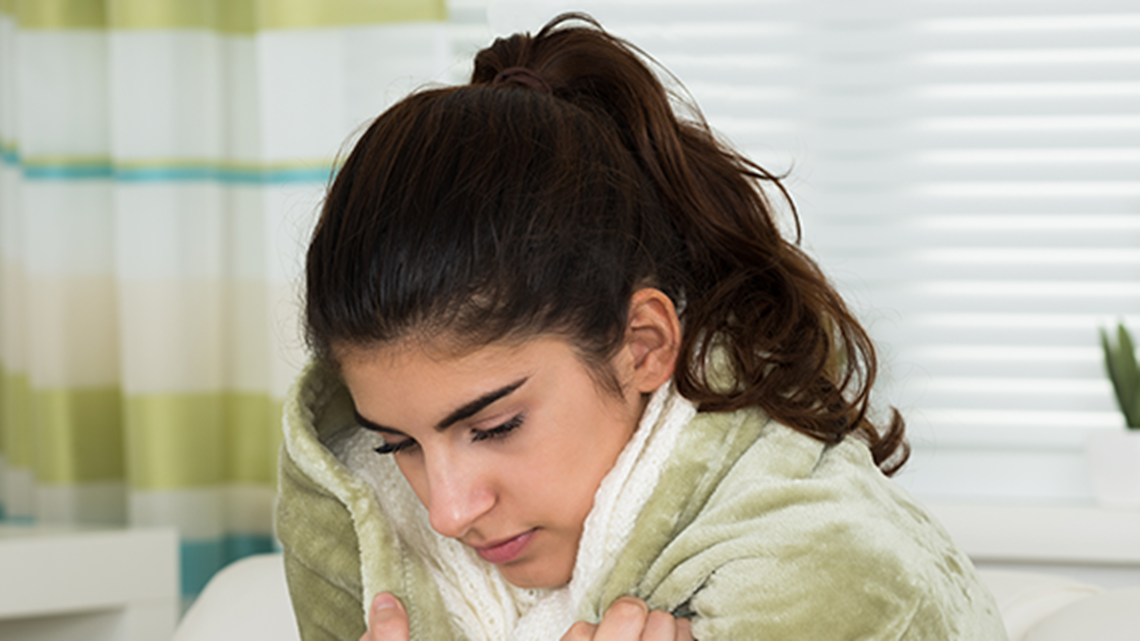How You Catch a Cold: Where Do Cold, Flu & Germs Hide?
How you catch a cold: where do cold, flu & household germs hide?
The common cold is a bacterial and viral infection of your nose and throat. It is harmless; even though it might not feel that way, how you catch a cold varies from case to case.
We catch viruses by touching things infected with germs, such as a doorknob, a keyboard, elevator buttons, and staircase banisters, and then passing the germs along by touching our nose or mouth.
Cold and flu viruses can survive up to 24 hours on some surfaces, meaning those germs can linger in your home for too long.
Generally, you don't need medical attention to treat and prevent colds and flu. However, it's important to learn where cold, flu, and household germs hide to protect your loved ones, especially children, from cold and flu.
Symptoms of a cold
Common cold symptoms usually appear one to three days after exposure to a cold-causing virus. Signs and symptoms, which can vary from person to person, might include the following:
- Runny or stuffy nose
- Sore throat
- Cough
- Congestion
- Slight body aches or a mild headache
- Sneezing
- Fever
How you catch a cold?
Here’s exactly how you catch a cold or flu and what you need to know to protect yourself next time.
- Viruses spread through tiny respiratory droplets in the air that are released when a sick person sneezes, coughs or blows their nose.
- Touching objects or surfaces infected with the virus causes cross-contamination. In addition, you can get sick if you touch your nose, eyes, or mouth with contaminated hands.
- If you come in contact with cold or flu germs, your chance of getting sick isn’t 100%. It depends on when the other person was infected and how many viral particles are contained in the droplets.
- People are most contagious during a cold's first 2 to 3 days. A cold is most often not contagious after the first week.
- People who have the flu may pass it on to others 1 day before symptoms start and up to 5 to 7 days after getting sick, so they may spread the flu before they even know they are sick.
Places where cold, flu and household germs hide:
Here’s a list of the most common places where cold, flu, and household germs easily hide.
- Doorknobs
- Computer accessories (Mouse, Keyboard, Headphones, etc.)
- Eating utensils
- Work desks
- Kitchen sink, countertops, and dustbin.
- Electronic appliances (Oven, dishwasher, washing machine, etc.)
- Escalator handrails
- Shopping cart handles
- Light switches
- Remote controls
- Toys
- Public places (Library, bathrooms, transport, etc.)
How to protect yourself from cold or flu?
Here’s how to reduce the risk of contracting a cold or flu.
- Wash your hand as often as possible with antibacterial soap or liquid hand wash for at least 20 seconds, and instruct your children to do the same. If soap and water are unavailable, using a hand sanitizer that eliminates 99.9% of germs is a viable option.
- Avoid touching your eyes, nose, and mouth with unwashed hands. Viruses that cause colds can enter your body this way and make you sick.
- Maintain at least 6 feet distance from people that are sick. People who are sick can spread viruses that cause the common cold through close contact with others.
- Ensure regular cleaning and disinfecting of home surfaces and objects with an antiseptic liquid or disinfectant spray to remove as many germs as possible.
FAQs
How long is a cold last?
Most people recover from a common cold in a week or 10 days. However, symptoms might last longer in people who smoke. Usually, you don't need medical attention for a common cold, but you must consult a doctor if your symptoms don't improve or worsen.
What is the most common way to get a cold?
The most common way to get a cold is the spread of respiratory droplets through the air when a sick person coughs or sneezes.
How can you treat cold yourself?
To help you get better against cold more quickly:
- Rest and sleep
- Drink plenty of water to avoid dehydration
- Gargle salt water to soothe a sore throat (not suitable for children)
If you have a high temperature or do not feel well enough to do your normal activities, stay home and avoid contact with other people until you feel better.
